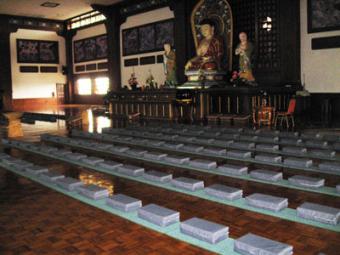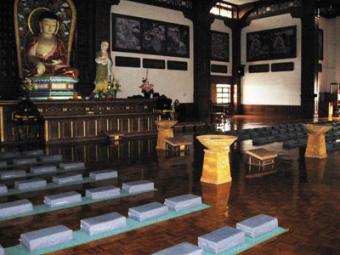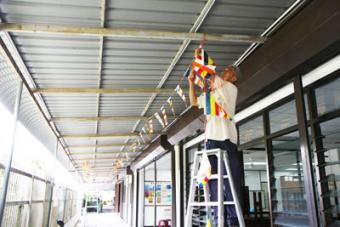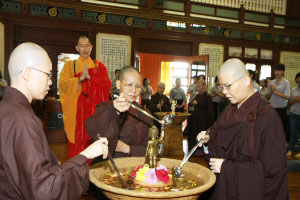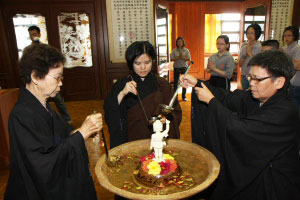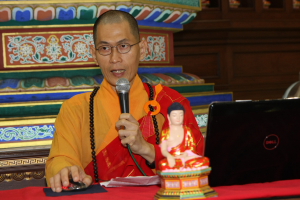Submitted by miyun on
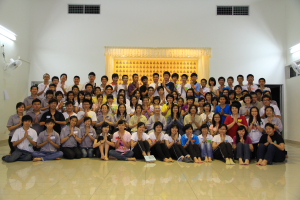
The ritual of bathing the Buddha is conducted every year on Buddha's birthday. This practice has been inherited from ancient time and is still observed by Buddhists around the world.
Legend records that when Prince Siddhartha was born, there were extraordinary and auspicious signs heralding his birth.
They describe the sky as being clear with brilliant sunshine, flowers blooming and birds singing - dragons appeared in the sky spurting two streams of purified water (one cool and one warm), that gently cascaded down to bathe him.
At his birth, seven lotus flowers sprung up beneath his feet as he walked - pointing one hand to the sky and one to the ground he said "in the heaven above and the earth below, I vow to liberate all who suffer in these three realms".
Since that time Buddhists all over the world celebrate his birthday by using fragrant water to bathe the image of the Buddha.
During the eight-day Buddha Day celebration at Than Hsiang Temple from April 28th to May 5th, the public may visit the temple daily to take part in Buddha Bathing Ceremony. They may also take fragrant water in cups home from the shrine. Apart from that, there are other activities awaiting them.
On April 29th, a Buddha Bathing Ceremony was held elaborately at the Main Shrine at 9 a.m. The Ceremony began with Venerable Zhen Ru leading the Sangha members and the devotees in chanting the Heart Sutra and the Bathing Buddha Gatha. Amid the chanting of the Bathing Buddha Gatha, Venerable Zhen Ru poured three ladles of fragrant water over the statue. It was then followed by the Sangha members and then devotees in this solemn ceremony. All in, more than 200 devotees performed this spiritual ceremony.
Noon Offering was then performed at 10 a.m. After that , Venerable Zhen Ru delivered a Dharma talk about the significance of Bathing the Buddha Ceremony to the devotees. It was then followed by Sangha Blessing session where five-coloured threads were given to the devotees.
It was then around lunch hour where the devotees flocked the canteen. A Taking Refuge & 5 Precepts Ceremony was held at the Great Compassion Hall at 1 p.m. About 8 people took the refuge while 5 people took the 5 precepts.
To become a Buddhist is to take refuge in the Triple Gems, also called the Three Treasures. The Triple Gems are the Buddha, the Dharma, and the Sangha. "Taking refuge in the Buddha, we learn to transform anger into compassion; taking refuge in the Dharma, we learn to transform delusion into wisdom; taking refuge in the Sangha, we learn to transform desire into generosity." (Red Pine, The Heart Sutra: The Womb of Buddhas, p. 132)
In regards with five precepts, observance of the five precepts constitutes the minimum moral obligation of a practising lay Buddhist. These five precepts enjoin against killing living beings, taking what is not given (or stealing), sexual misconduct, false speech, and use of intoxicating drink or drugs.
In the mid of the Ceremony, Venerable Zhen Ru explained the significance of taking refuge and five precepts to the participants.
